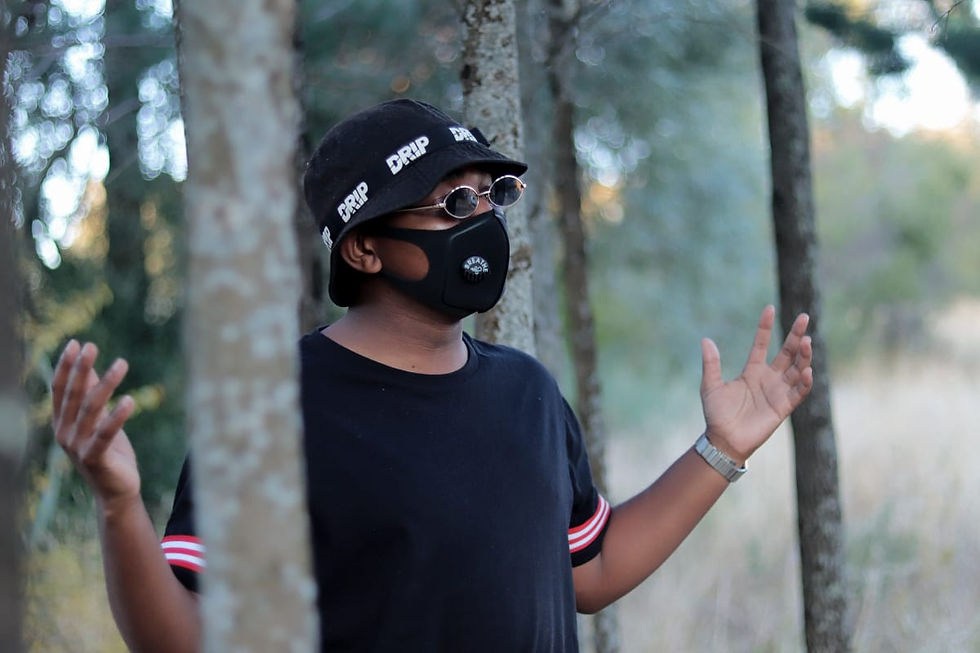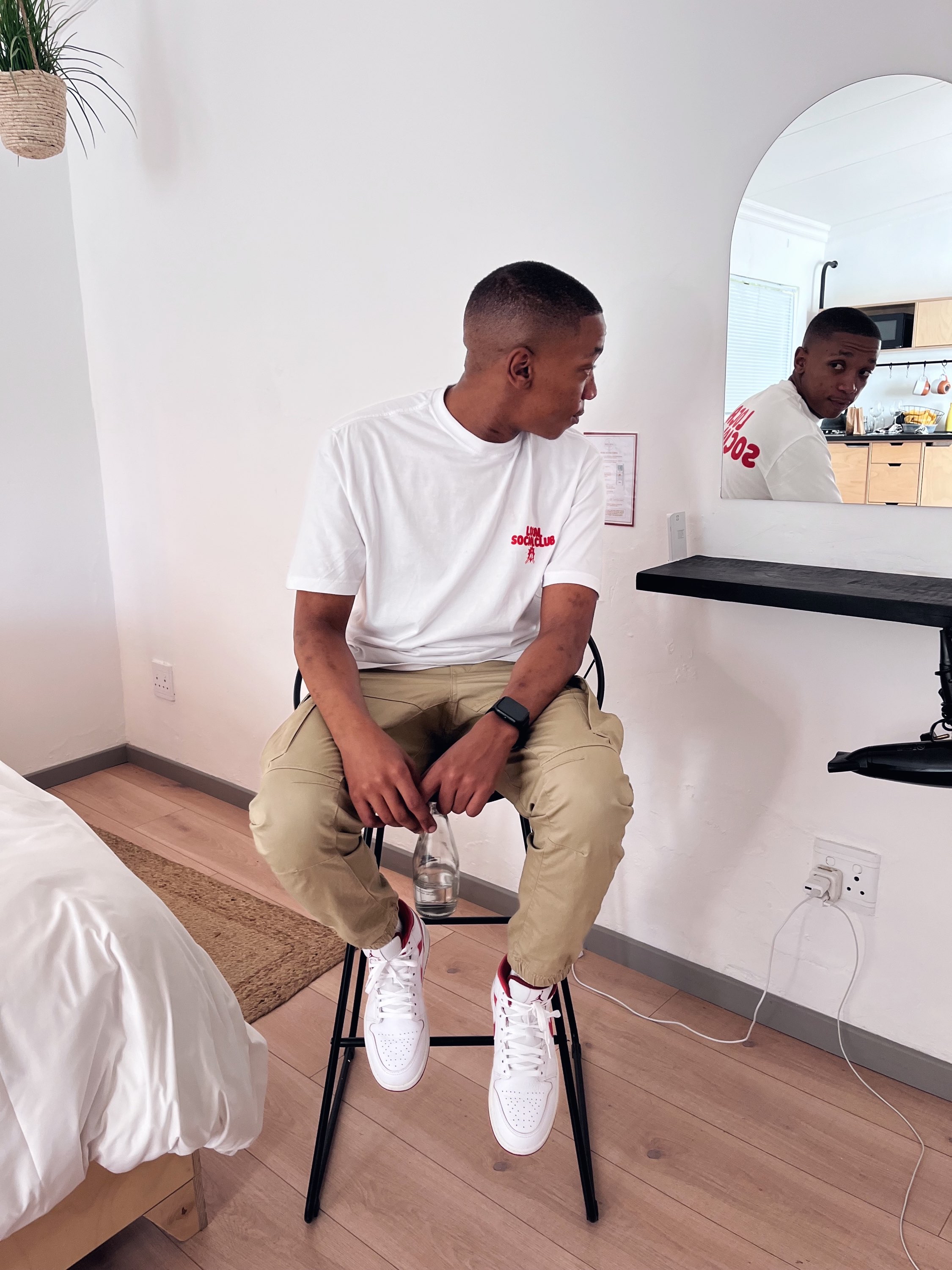WAITING FOR PHASES | INTERVIEW
- Khotso Isaacs
- Jul 24, 2020
- 5 min read
Lee-Roy has been dedicated to his music and community for quite some time. His name and the
brand he embodies have gained attention and are attracting followers. I had the opportunity to discuss
with him his musical inspirations, artistic methods, and latest releases.

(This interview has been edited and condensed for clarity)
For those who are not familiar, explain who Lee-Roy is?
Lee-Roy is a man who openly expresses his emotions, he is more passionate and this is evident in his demeanor. I believe my passion for music, my involvement in music, stemmed from being inspired by and wanting to imitate what Americans were doing, you know? Their way of speaking, choice of style, presence, essentially how they presented themselves in music videos, award shows, and in magazines. I always aspired to have that for myself, it caught my attention from a young age. I grew up listening heavily to Eminem, his style and the persona he portrayed in his songs because I felt misunderstood as a child, his music resonated with me deeply, his struggles and moments of despair in his songs made me feel understood and from that point on, it became my history, I wanted to express myself just like he did, to share my story.
When it comes to your introduction to music, what were some of the early musical influences you had?
My influences include Dr. Dre, 50 Cent, G Unit, D12, and a fondness for Busta Rhymes. Busta Rhymes caught my attention because I used to watch my brother imitate him. While I wasn't very familiar with his music, I was drawn to his persona. The same admiration goes for Ludacris and Missy Elliott – I appreciated their charisma above all. I also draw inspiration from Southern rappers, particularly Lil Wayne from the Carter 2 era. Before that, I wasn't aware of his work. T.I. is another artist I highly respect and enjoy his body of work.
A lot of people are familiar with your presence in the battle rap scene, speak to me about how
that phase of your life was important and how it shapes the music that you're creating right
now.
My interest in battle rap stemmed from my disappointment with the lack of inspiration in hip hop. I felt that the music was lacking substance, and my talents as a proficient rapper were being overlooked. I sought a platform that truly appreciated rap skills, drawn to the traditional style of rapping that emphasizes metaphors, imagery, punch lines, and setups. That's why I hold Proverb in high regard, as he embodies all these crucial elements.
In Bloemfontein, the local rap community didn't value this style of rapping, prioritizing other aspects over lyrical prowess. This led me to the world of battle rap, where I could showcase my abilities and establish myself as a top-tier rapper. However, my current objective is to build authentic connections with people rather than just seeking to impress them. I've realized that within the community, there are individuals who appreciate relatable stories more than intricate wordplay.
The inception of The Still Untitled Series drew significant inspiration from battle rap, particularly in terms of lyrical depth. Each line was crafted to carry weight, adhering to the battle rap standards where every line must hold significance without any room for filler.
What is your creative process like?
My music is inspired by current events. It's frustrating that the music only materializes after I've written the lyrics due to the lack of immediate access to an engineer. Despite my efforts to highlight city events in my music, it often goes unnoticed, especially in my freestyles. If you closely examine my body of work, you'll notice that I've employed PR tactics since my first project, "Still Untitled One." In this project, I referenced Angie, anticipating the buzz it would create. Subsequently, in "Still Untitled Two," I addressed the issue of artists performing for exposure at Macufe. This trend continues throughout my music catalog, as I aim to generate buzz and discussion in Bloemfontein.
I've always viewed hip-hop music as a form of journalism, reporting on street happenings. It's disheartening that my efforts often go unnoticed, despite my intentions not being malicious. Perhaps I need to work harder to ensure my message resonates.
From my days hosting "#StraightTalkWithLeeRoy" on the radio, my aim has consistently been to produce music that shocks and captivates.
My goal is to stimulate conversations through my music, like the allusions in the track I collaborated on with Ohmz and the title song "Backwoods." These allusions are intended to spark meaningful dialogues, not to single out specific individuals or entities.

What inspired the project Backwoods and how does it differ from your previous musical contributions?
Before Backwoods, we had STILL – Situations That Involve Life Lessons
Volume 1. That was a visual tape. A tape that I gave to the masses in
steps and, most importantly, in visuals. I became known for that and I
ran with that move for a minute. The second body of work was me
saying, "Cool, let me give people the actual music because they have
been crying for places where they can stream my
music," and that's when I gave them STILL Volume 2.
Backwoods is me laying the foundation for what people should expect
going forward. As much as it is a project on its own, it's a set-up for
what is coming next. There are multiple characters in my music and on
Backwoods, I am laying out who those characters are and what they
represent. I give you Lee-Roy from the STILL Untitled series. I give you
‘Senor Pente’ and I give you ‘Sad Nigga Hour’ Lee-Roy. These characters
are all unique and have certain representations that they stand for in
the music.
You seem to be very big on building and maintaining
relationships not only with artists but with creatives at
large. Speak on the importance of maintaining those
relationships.
Although this isn't a superficial response, I've always viewed myself as a connector for other creatives. I firmly believe in bridging the gap between individuals from different regions, such as pairing someone from Pretoria with another from Bloemfontein, or facilitating collaboration between individuals from Durban and the Eastern Cape. This approach has always defined me. When I engage in discussions with fellow creatives, it feels like we share a common language. Establishing connections is crucial for us creatives. For instance, you might reside in the Western Cape but have business ties in Pretoria, while I may be based in Bloemfontein but have financial interests in Namibia. Maintaining these connections sustains us, ensuring that we all thrive. On a larger scale, your narrative in Cape Town could resonate with individuals all over South Africa. We are all connected in some way, so why not collaborate? Some creatives prioritize their egos, adopting a stance of "no one assisted me during my journey, so it's part of the struggle." That mindset is flawed! I sympathize with them, but they need to undergo a healing process.


How do you monetize as an artist while we're facing a pandemic?
My natural inclination has always been towards earning money, which is why I engage in selling merchandise. The concept of "Be the brand, Sell the Brand" resonated with me when Nipsey Hussle expressed it, and I have consistently integrated this idea into my own brand. I embody my merchandise, yet I also distinguish myself as a businessman.
How much longer must we continue to WAIT FOR PHASES?
Truth be told, I am uncertain about the timeline for the release of "Phases."
I am adamant about not rushing the music. It is important to me that both my music and the characters within it have the opportunity to develop before we delve into "Phases." As I have mentioned in previous interviews, "Phases" will represent different aspects of Lee-Roy. I envision each character flourishing within their own storyline, so that when we reach "Phases," they will be fully realized.




Comments